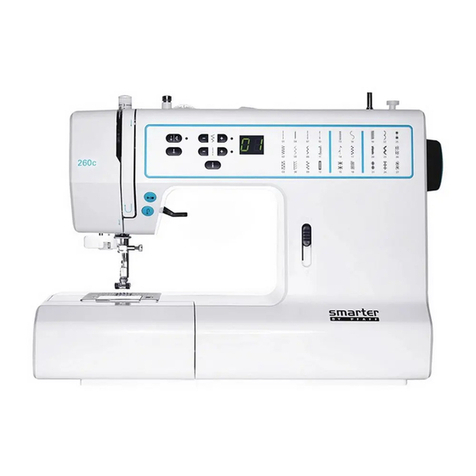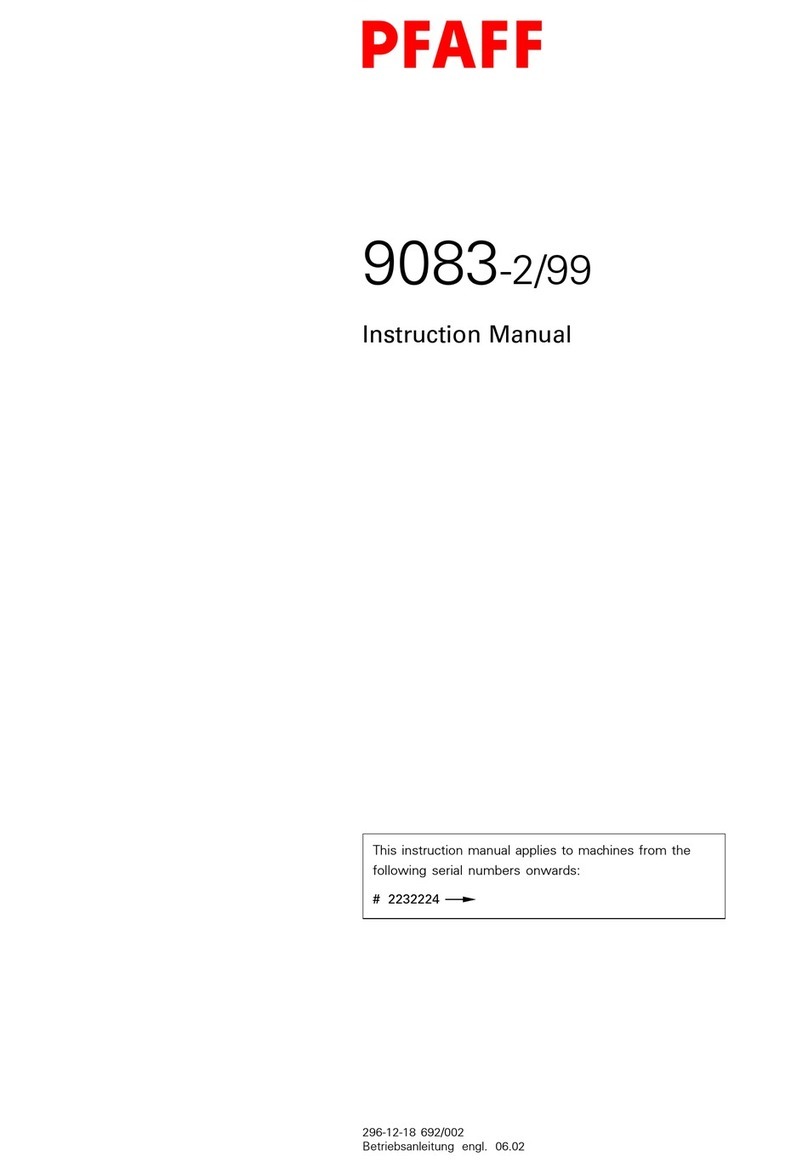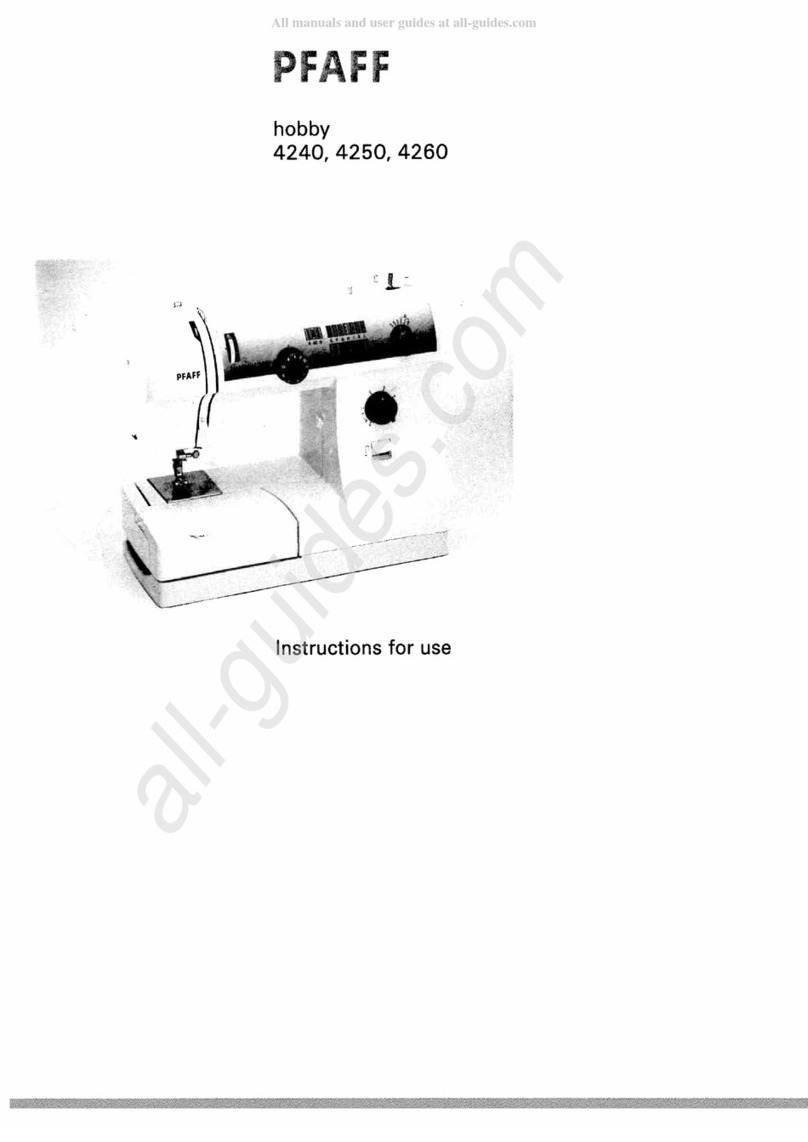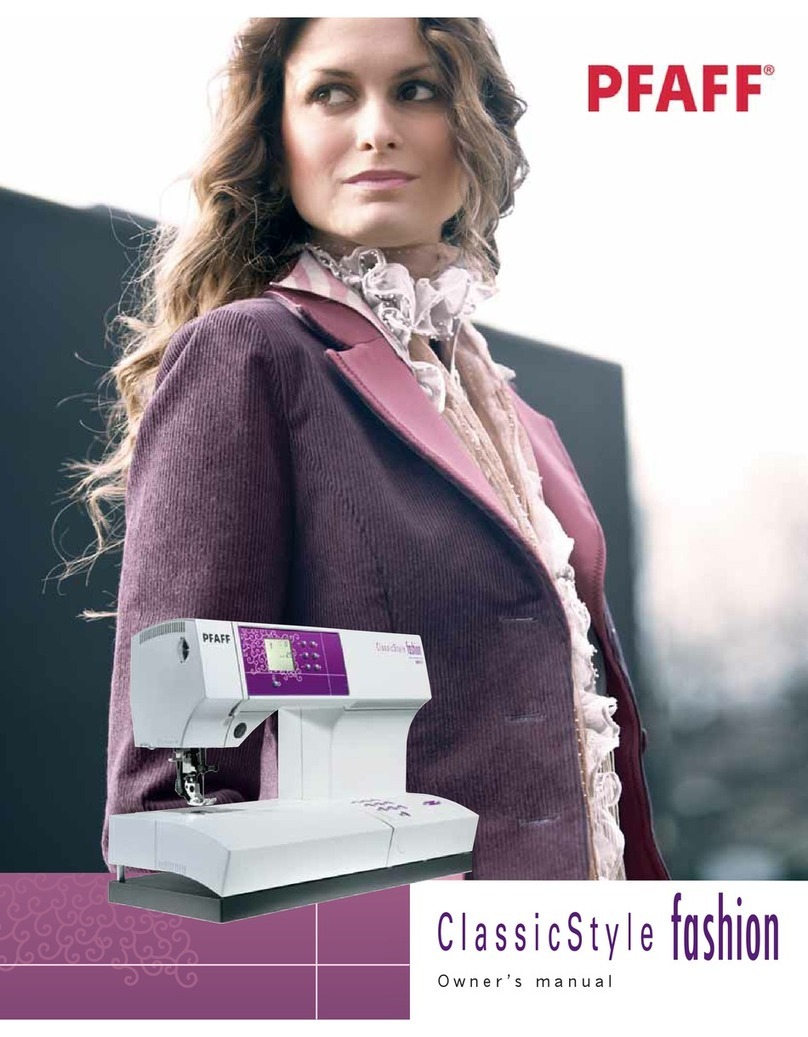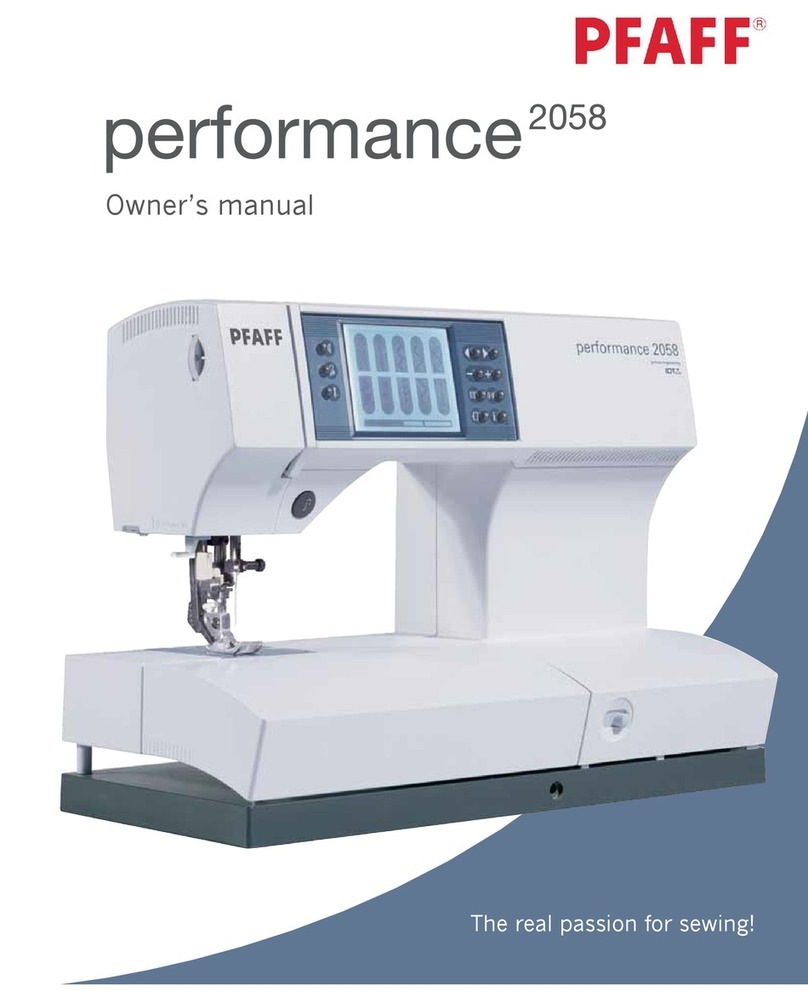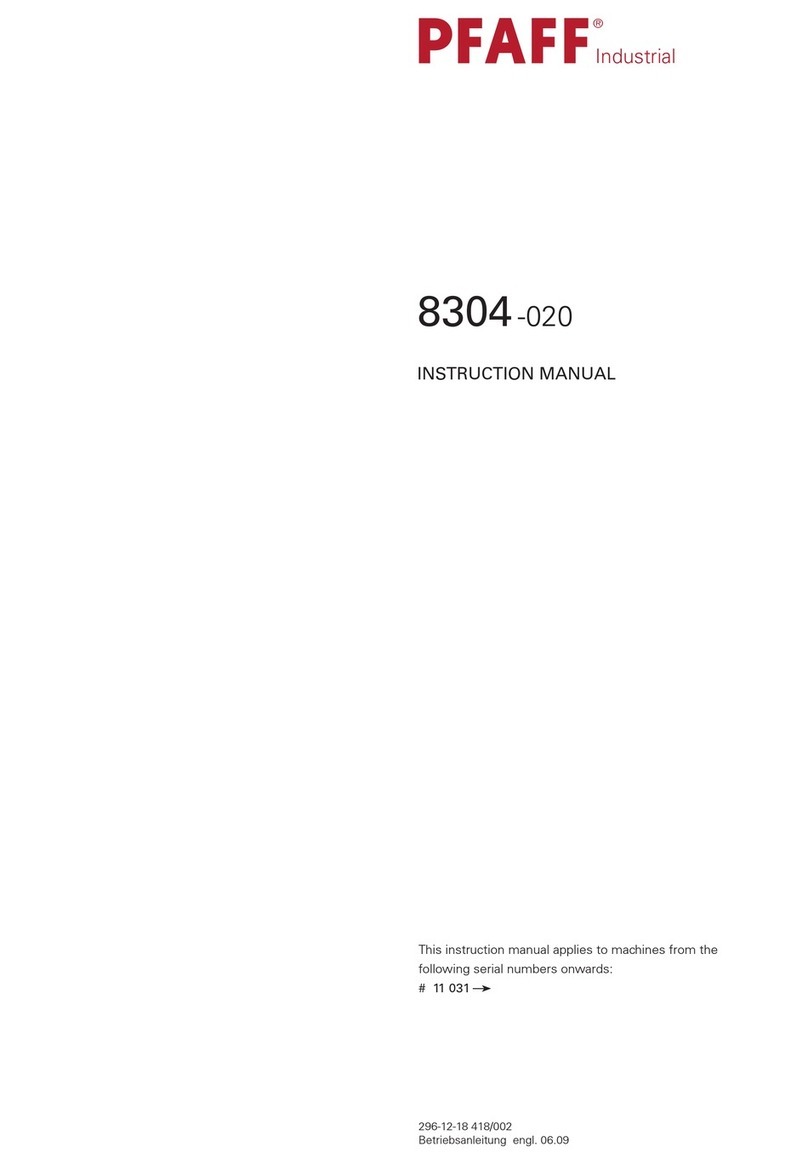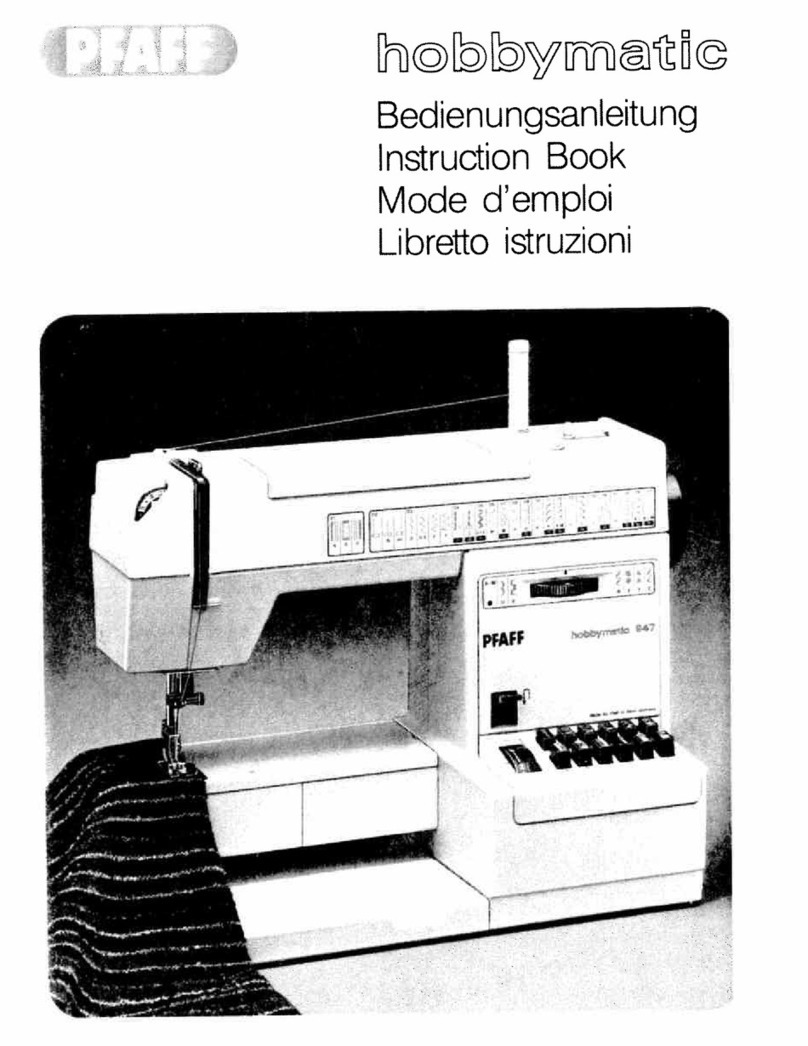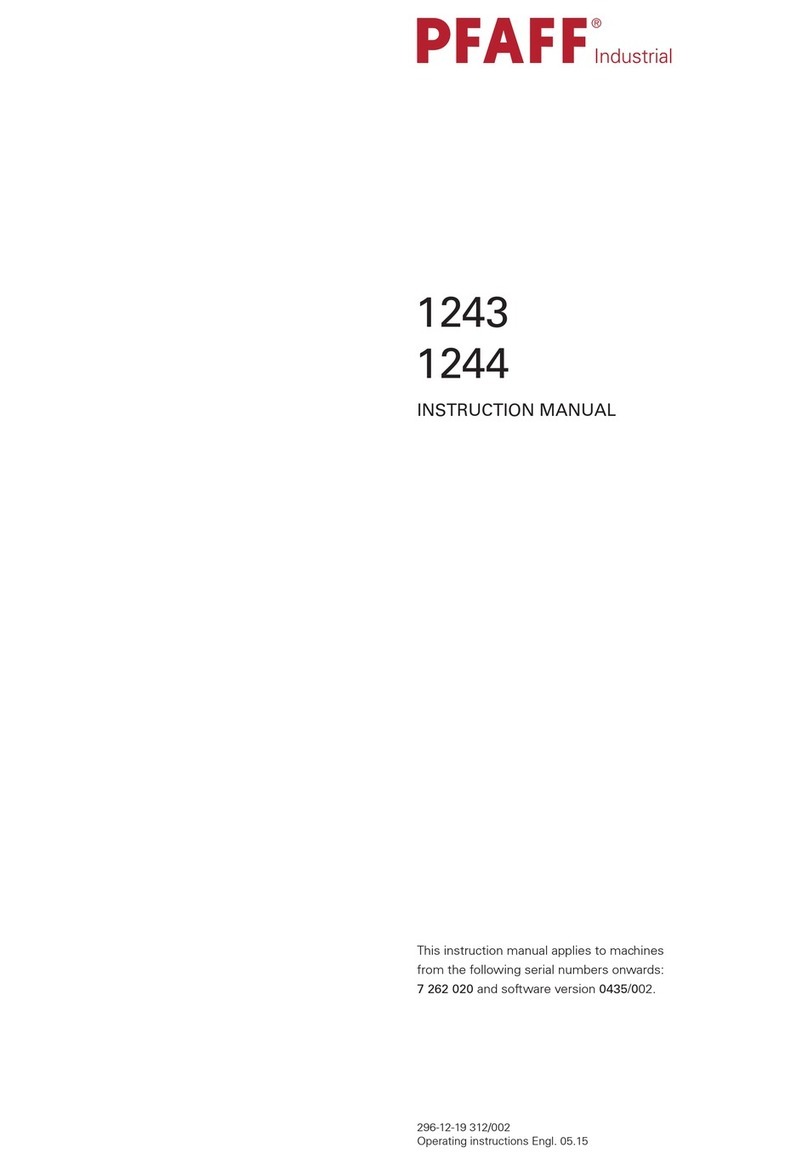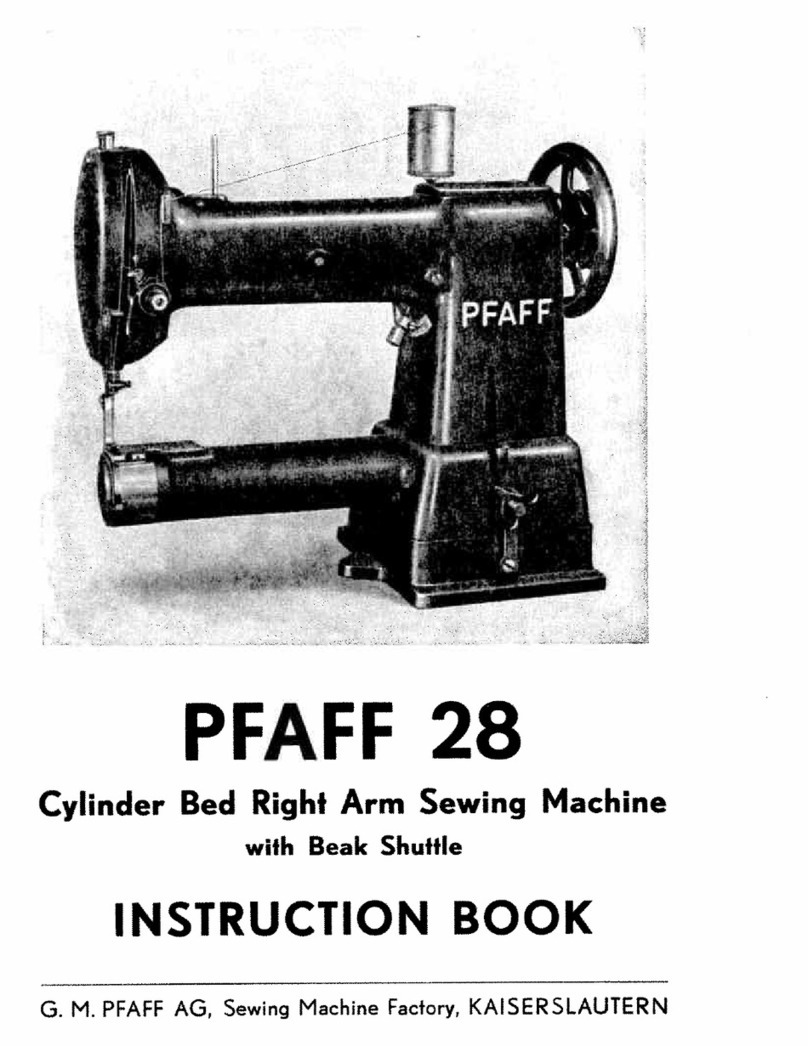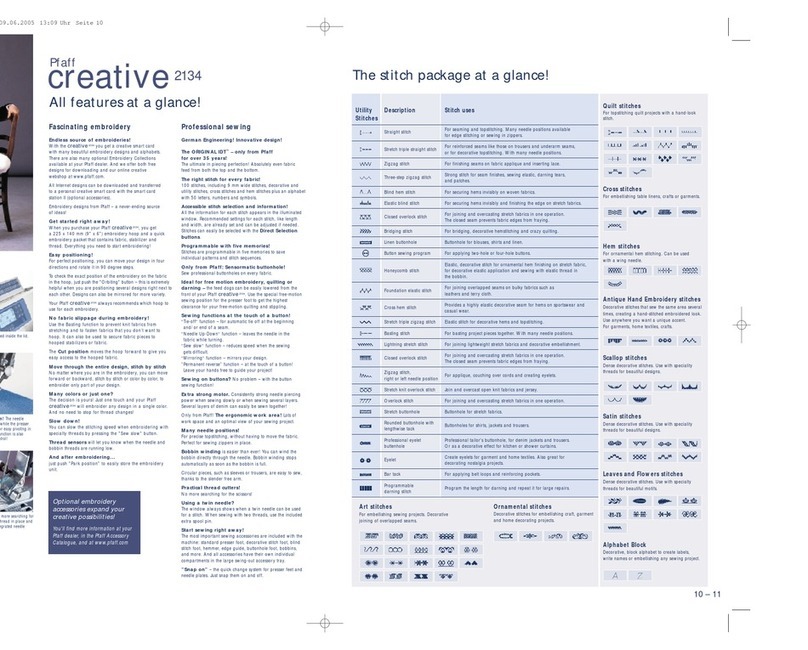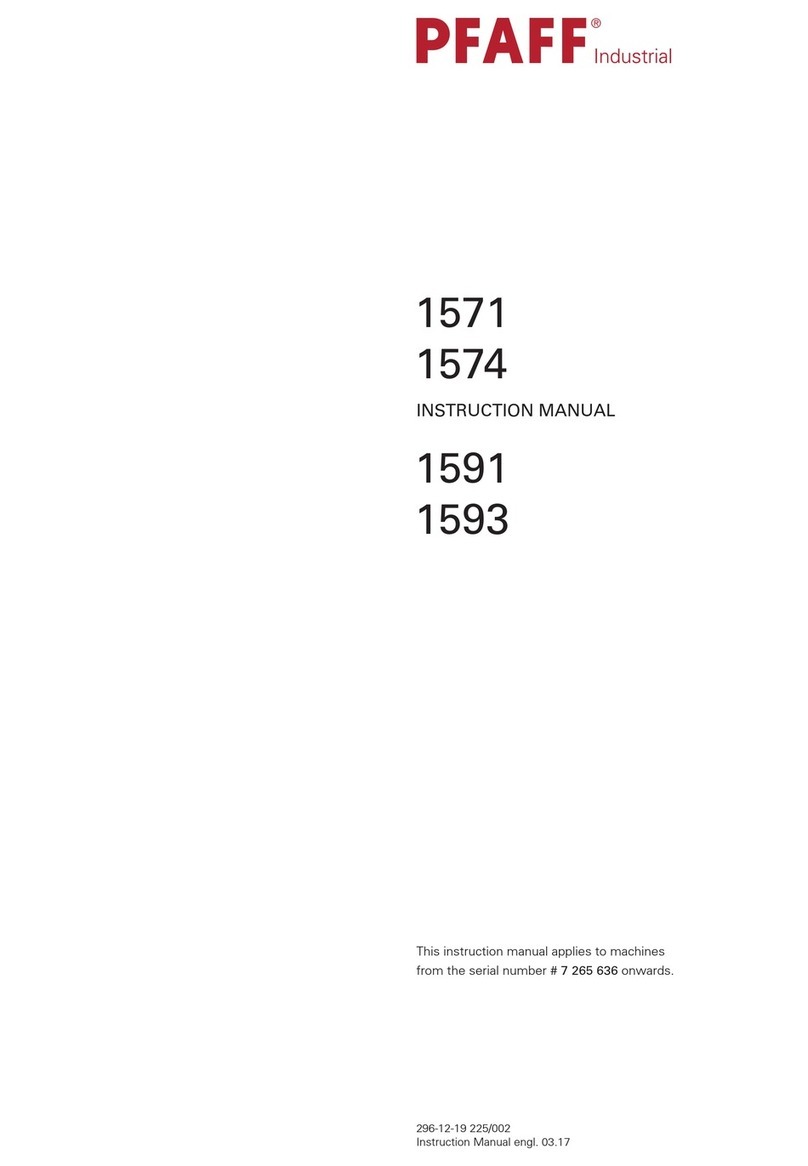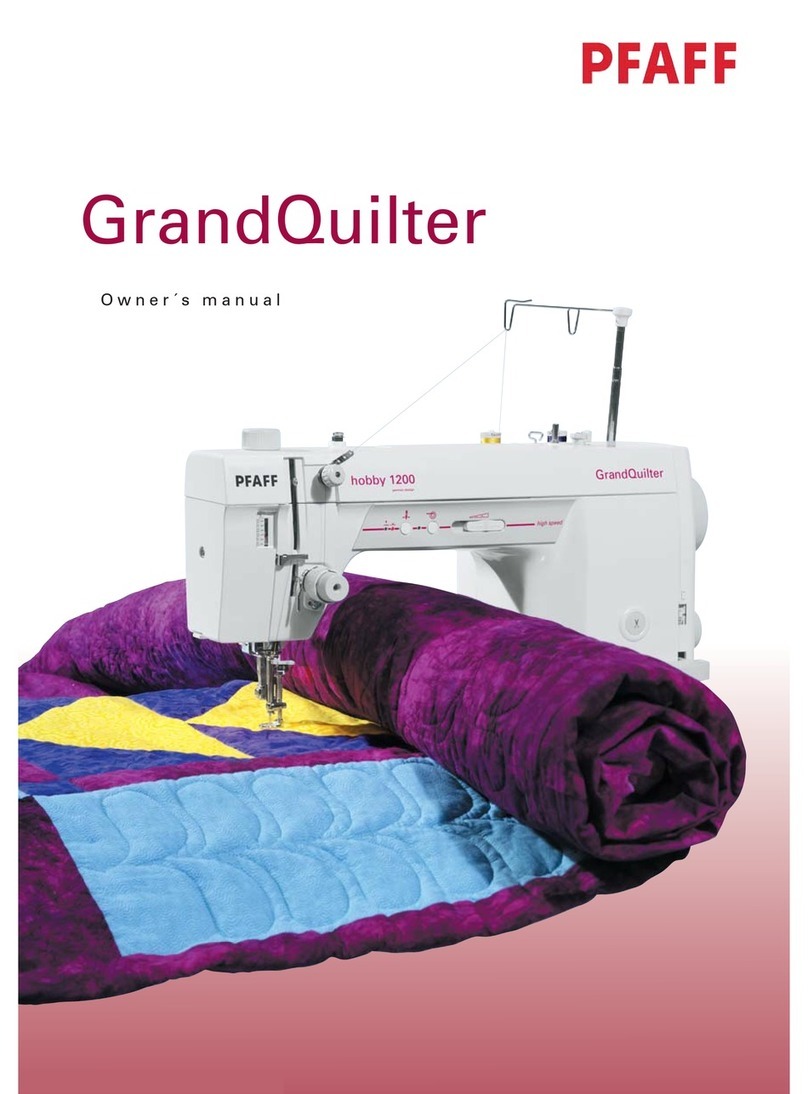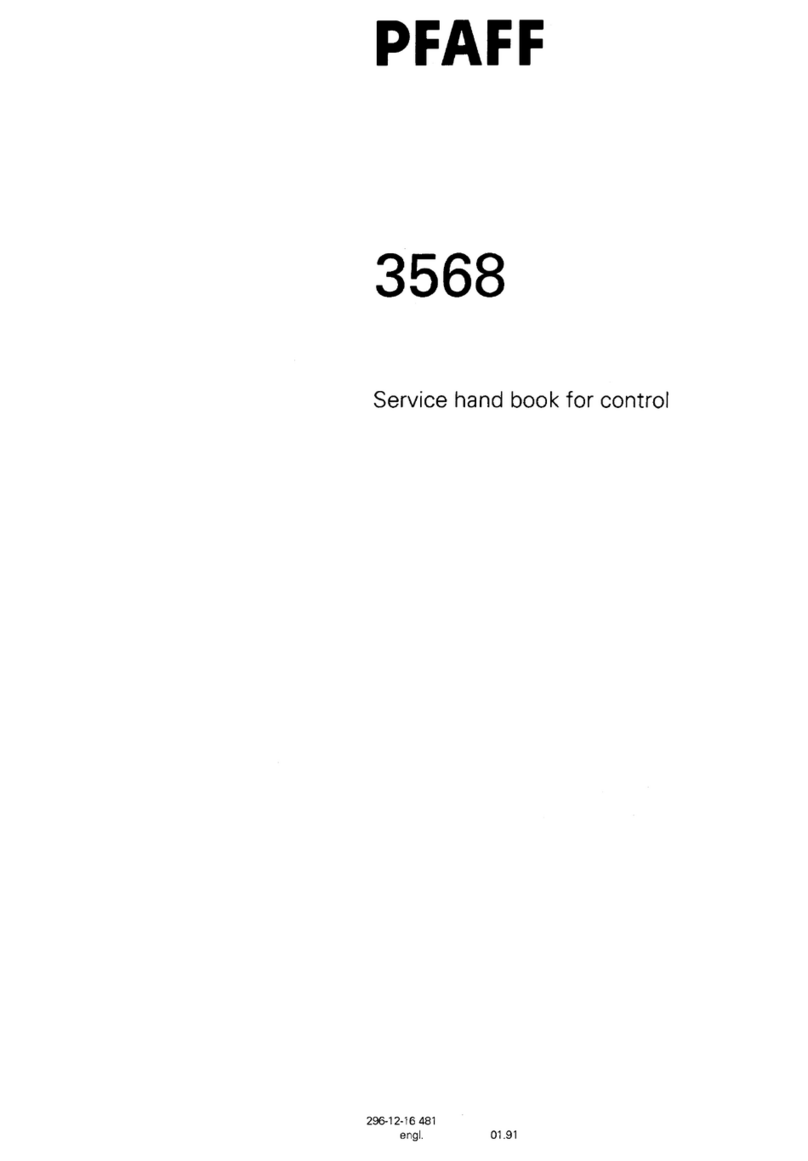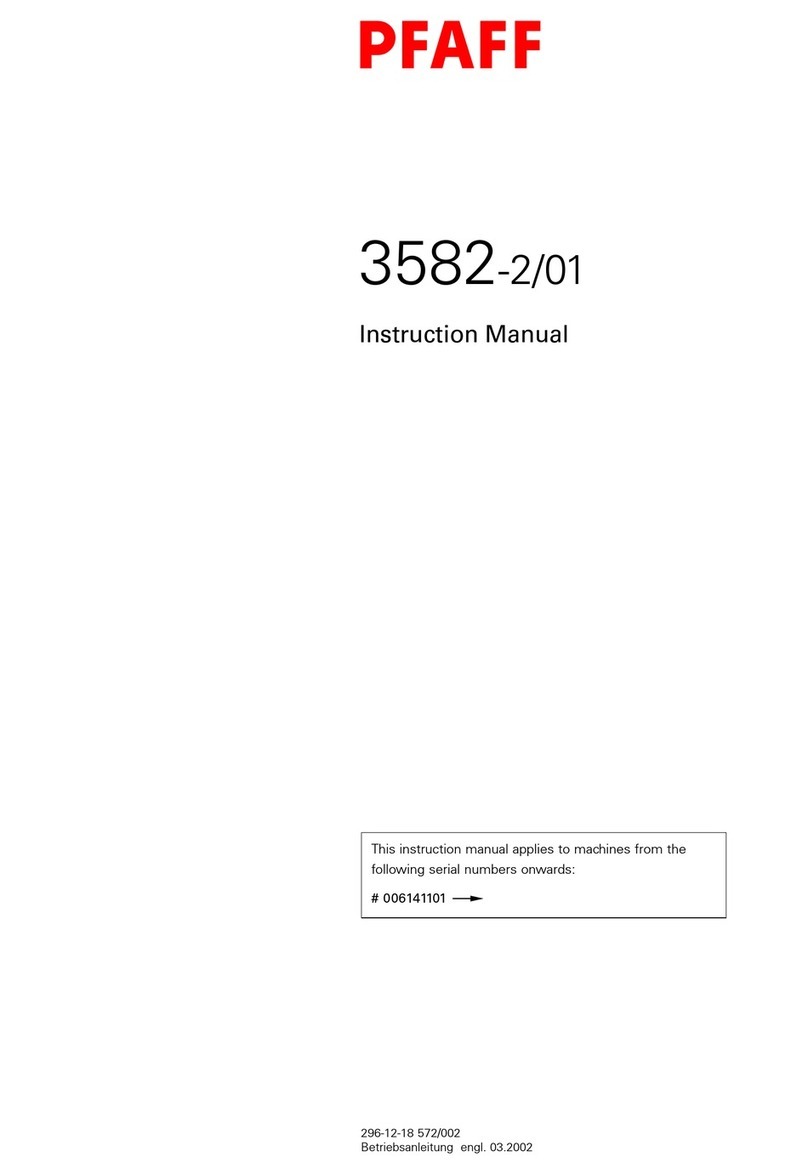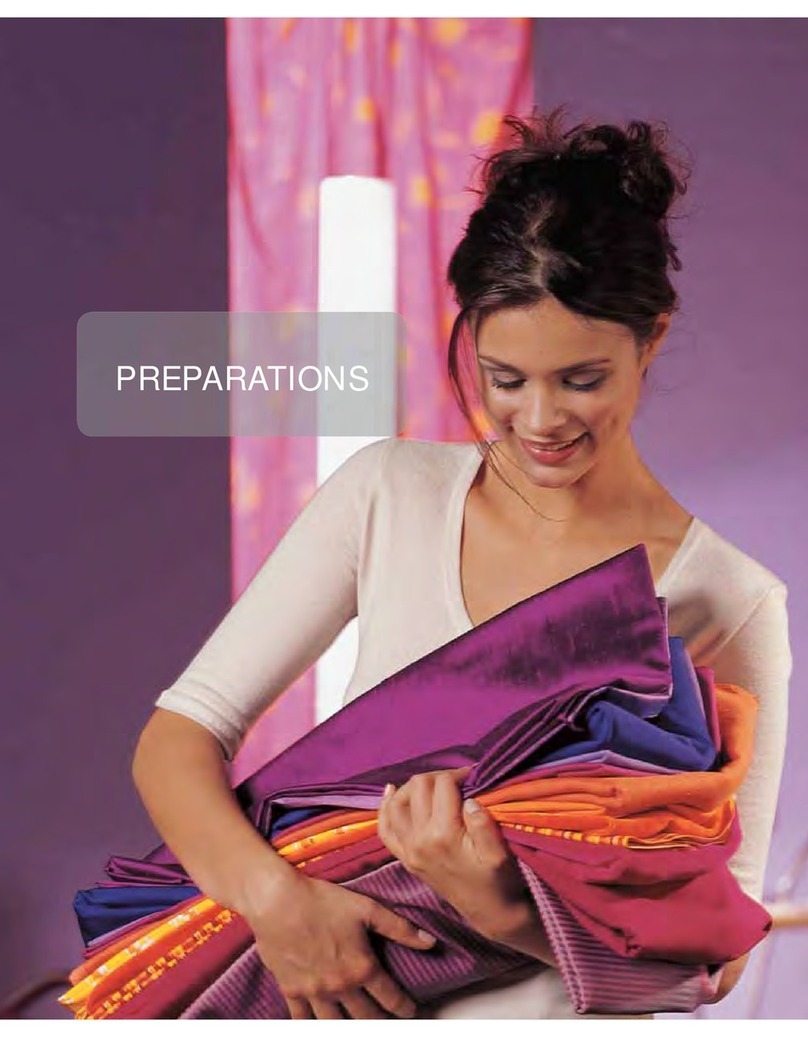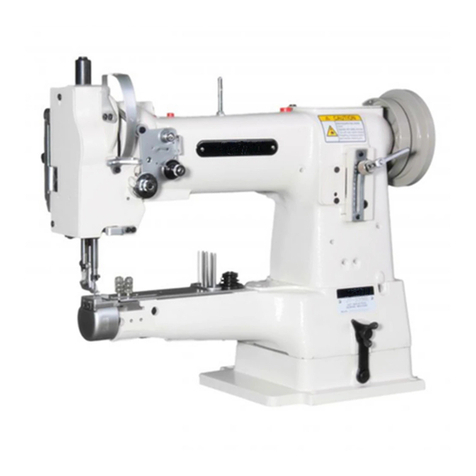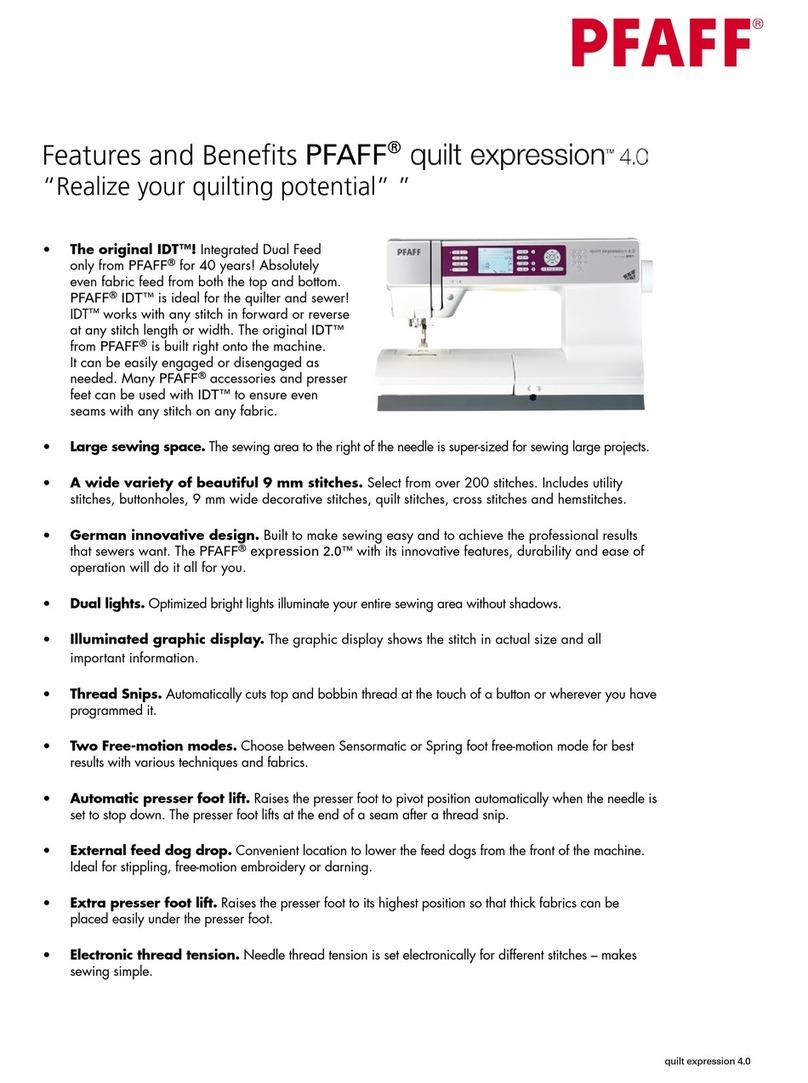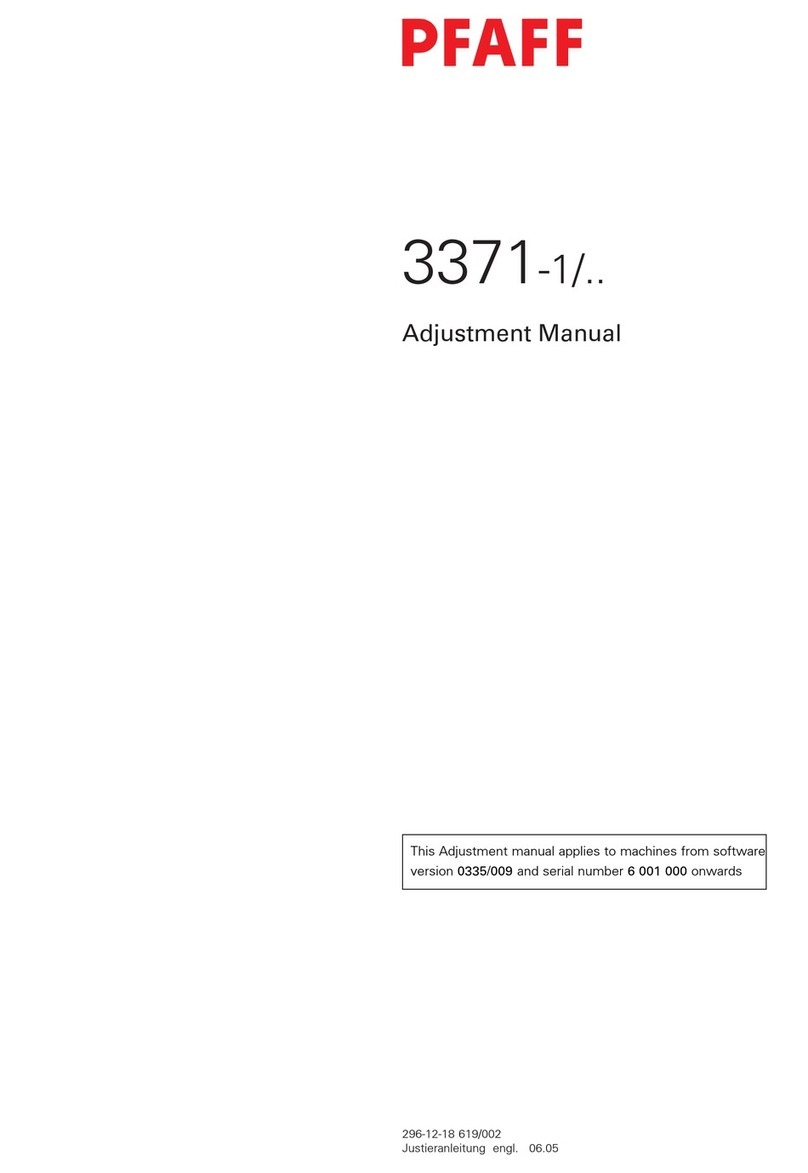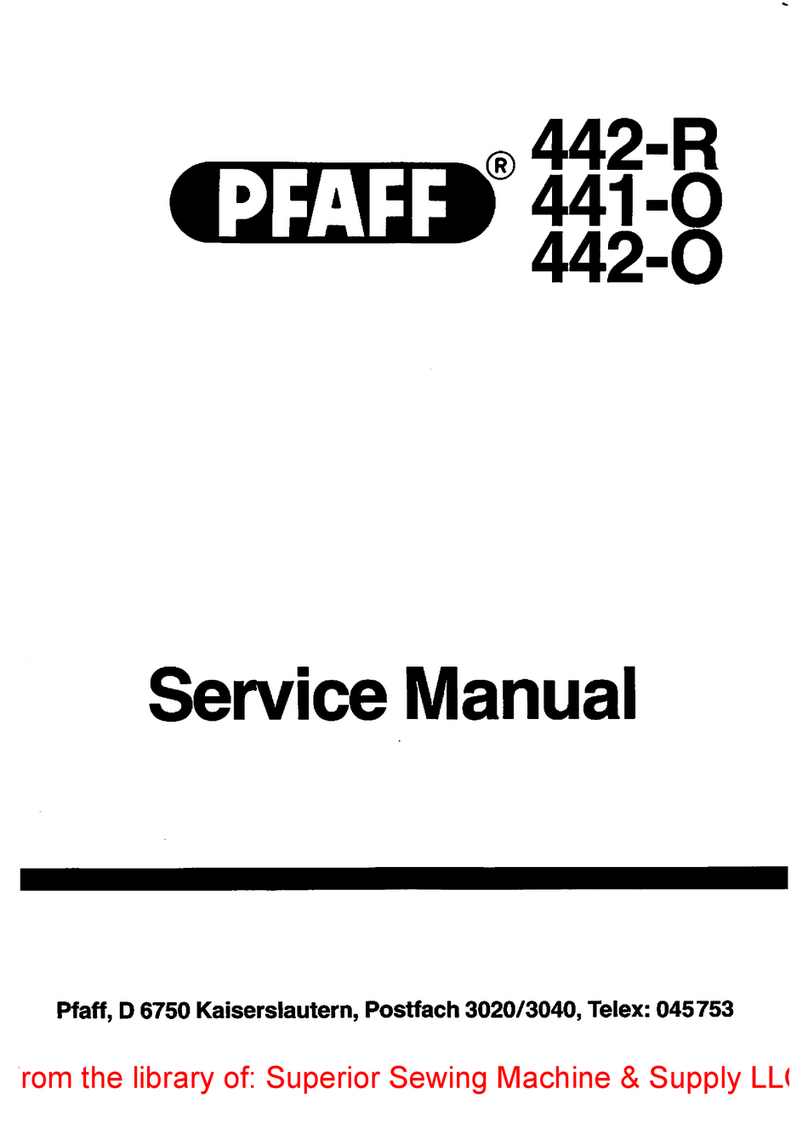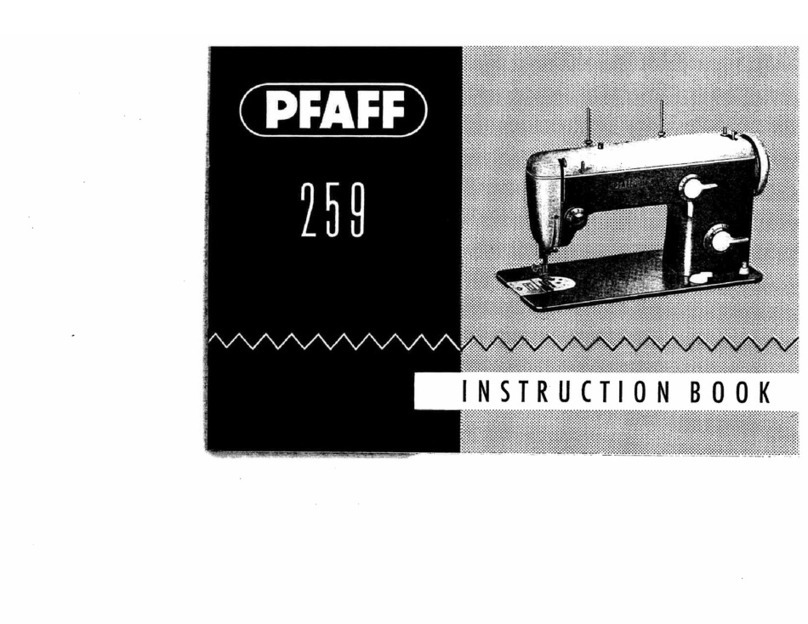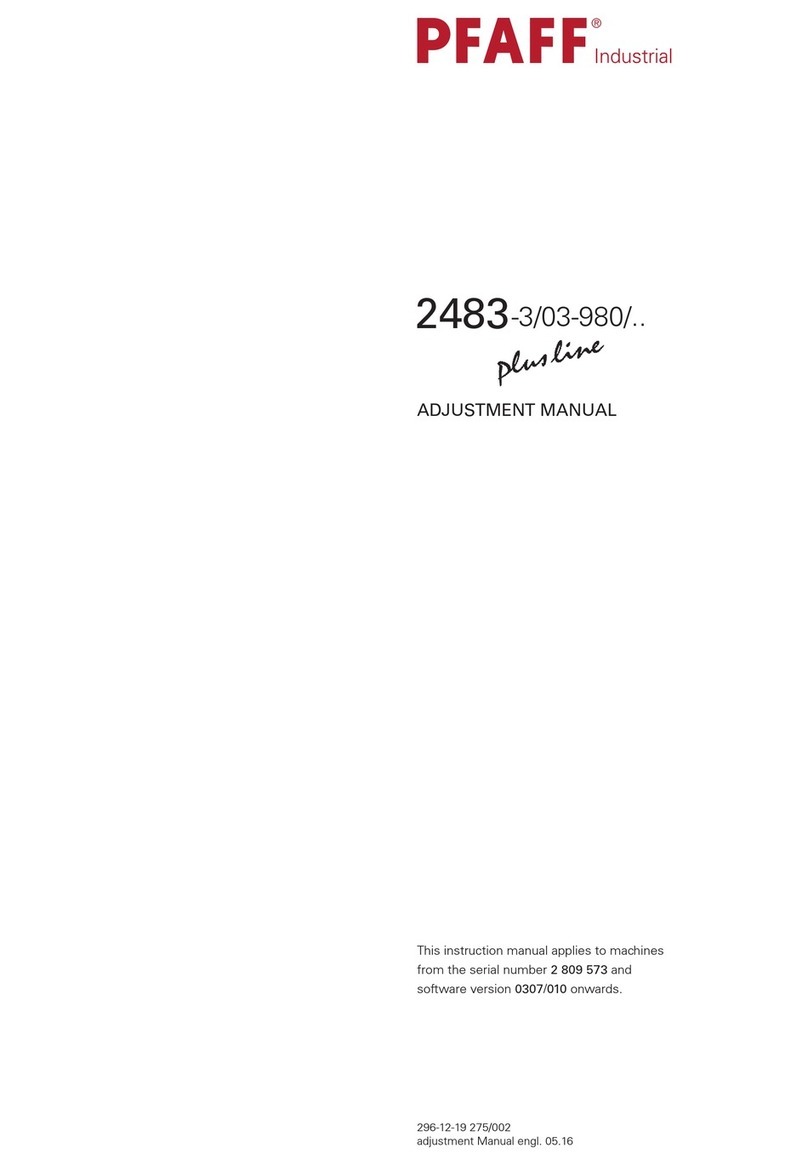Contents
Contents ...............................................................................Chapter - Page
9Setting up .................................................................................................................. 9 - 1
9.01 Inserting the needle (on the PFAFF 1193) ................................................................. 9 - 1
9.02 Inserting the needle (on the PFAFF 1194) ................................................................. 9 - 2
9.03 Winding the bobbin thread, adjusting the thread tension .......................................... 9 - 3
9.04 Changing the bobbin / threading the bobbin thread ................................................... 9 - 4
9.05 Adjusting the bobbin thread tension .......................................................................... 9 - 4
9.06 Threading the needle thread / adjusting the needle thread tension
(on the PFAFF 1193) .................................................................................................. 9 - 5
9.07 Threading the needle thread / adjusting the needle thread tension
(on the PFAFF 1194) .................................................................................................. 9 - 6
10 Care and maintenance ............................................................................................. 10 - 1
10.01 Cleaning and maintenance intervals......................................................................... 10 - 1
10.02 Cleaning the hook compartment and the hook ........................................................ 10 - 1
10.03 Lubricating the post ................................................................................................. 10 - 2
10.04 Lubricating the hook ................................................................................................ 10 - 2
10.05 Greasing the bevel gears 10 - 3
11 Adjustment .............................................................................................................. 11 - 1
11.01 Notes on adjusting ................................................................................................... 11 - 1
11.02 Tools, gauges and other accessories ....................................................................... 11 - 1
11.03 Abbreviations ........................................................................................................... 11 - 1
11.04 Control and adjusting aids........................................................................................ 11 - 2
11.05 Pre-adjusting the needle height ............................................................................... 11 - 3
11.06 Setting the feed dog at neutral position................................................................... 11 - 4
11.07 Feed dog lifting stroke ............................................................................................. 11 - 5
11.08 Feed dog height ....................................................................................................... 11 - 6
11.09 Driving motion of the feed dog ................................................................................ 11 - 7
11.10 Centering the needle in the needle hole .................................................................. 11 - 8
11.11 Hook shaft bearing and gearwheel backlash............................................................ 11 - 9
11.12 Needle rise, hook-to-needle clearance, needle height and needle guard ................. 11 - 10
11.13 Bobbin-case opener ................................................................................................. 11 -11
11.14 Needle thread tension release (on the PFAFF 1193)................................................ 11 -12
11.15 Needle thread tension release (on the PFAFF 1194)................................................ 11 -13
11.16 Thread check spring and thread regulator (on the PFAFF 1193) .............................. 11 -14
11.17 Thread check spring and thread regulator (on the PFAFF 1194) .............................. 11 -15
11.18 Setting the knee lever.............................................................................................. 11 -16
11.19 Knee lever stop ........................................................................................................ 11 -17
11.20 Bobbin winder.......................................................................................................... 11 - 18
11.21 Limiting the stitch length ......................................................................................... 11 - 19
11.22 Pressure of the roller presser .................................................................................. 11 - 20
11.23 Changing the needle bar stroke ............................................................................... 11 - 21

